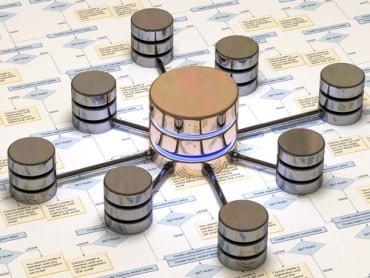
Connected intelligence in manufacturing refers to a mesh of models and smart devices that integrate real-time analytics into business operations, helping organizations process their current and historical data to provide actionable insights.
Every aspect of the manufacturing business environment and the economics that drive them is changing, from raw materials to supply and demand to customers, partners, and employees.
The manufacturing industry is constantly under pressure to keep pace with the shifts happening in adjacent industries and often relies on a combination of legacy and new-age technologies to run day-to-day operations.
While there are a plethora of opportunities to run data-centric transformation in industrial manufacturing, the sector is entrenched with multiple challenges, such as production volume, quality defects, sourcing, and procurement, and now aiming to avoid the ripple effects of disruption.
Manufacturers are struggling to stay afloat in this tough economic climate.
Many studies have shown that the average life span for S&P 500 firms has dropped from 90 years in 1935 to 18 today and will be five fewer before 2030.
The reason?
Manufacturers are often more inclined to apply quick-fix solutions to problems rather than digging deeper and finding the root cause.
Leaders in the industrial sector are overwhelmed with information about new technology products and services that claim to help them sail through disruptions. As a result, many businesses wind up their tech-modernization initiatives before managing to avoid accumulating technical debt.
In turn, companies become less agile and more inefficient, negatively impacting their bottom line.
Therefore, organizations should stop looking at problems in isolation but as connected patterns of challenges, solutions, and cost-effective operationalization avenues to orchestrate business in perfect harmony.
How do we bring all of this together to maximize returns and deliver sustainable value?
The answer is connected intelligence.
Connected intelligence in manufacturing refers to a mesh of models and smart devices that integrate real-time analytics into business operations, helping organizations process their current and historical data to provide actionable insights.
Elements for connected intelligence
- Leveraging connected devices and systems with the ability to generate data, signals, and patterns related to consumption or usage behavior. (This is where IoT can help.)
- Ability to collate, store, and process data from these systems to support business process modernization and optimization. (This is where cloud platforms and services drive value.)
- Ability to generate insights, real-time decisions, and actions that can be monetized as differentiators. (This is where AI/ML and IoT lead the way.)
Connected intelligence will assist business leaders in understanding the non-linear role of tech in transformation. The interplay of IoT, cloud, and analytics is THE FORMULA for delivering exponential value to customers working as a single and cohesive orchestra.
The first step toward connected intelligence: Building a connected manufacturing ecosystem with data collected from smart devices
The continuous up-to-date stream of data from IoT devices is the fuel for connected intelligence. Enterprises should collect and use real-time, contextual information to enable business growth, from understanding customer needs better than ever before while optimizing efficiency at every level.
How to know if your data is always working for you?
The first step in resolving a data problem is to identify the root cause of the problem in the data’s foundation. For example, assume you go to a supply chain manager with a lower-than-expected quarterly earnings figure and expect him to provide a root cause. It can be difficult to identify a problem when you are bombarded with questions about invoice leaks, cost KPIs, and order status. Even looking at your dashboard may not help because many other factors are involved in sales that require attention.
Unfortunately, in too many use cases, many of us rush to look at the problem from a narrow lens. Therefore, it’s difficult to onboard everyone with an isolated use case. Other factors include:
- Over-reliance on available data
- Ambiguous problem statements focused on opinions or interpretations
- Incorrect approach to analyzing potential factors
- Settling on a gratifying conclusion
Assume you discovered that assembly line sensors could improve overall operations effectiveness (OOE), so you decide to install and test them in your manufacturing unit. Once you collect and analyze the data from these devices, you discover that the production line is operating at peak efficiency. Then, using the new data stream, you may be able to forecast the next quarter’s earnings and, as a result, identify and resolve the long-standing root cause of lower quarterly earnings.
Therefore, consider investing in smart IoT devices if you want to make your data work for you. You will be able to stay ahead of the curve and capitalize on this growing trend if you streamline your operations and integrate IoT into your business models.
The second step towards connected intelligence: Collating, storing, and processing data on the cloud
We have now corroborated that industries can thrive on interconnected processes and systems enabled by smart IoT. There is, however, a catch. Piecemeal automation and digitization can result in data silos. As a result, without proper data integration, IoTs will produce less-than-useful results, reducing visibility.
According to HBR, “almost 70% of all data transformation initiatives fail. Fundamentally, most technologies offer opportunities for increased efficiency and customer intimacy. However, if people do not have the right mindset to change and current organizational practices are flawed, digital transformation will simply amplify those flaws.”
Let’s return to our previous example of lower-than-expected quarterly earnings. In addition to installing new IoT devices, you must now evaluate the solution’s relevance and how the devices interact with other areas of the organization. Furthermore, if you want to scale the implementation of IoT across your enterprise, you’ll need a comprehensive and cost-effective operationalization framework and strategy. This can be done by accelerating data transformation.
The cloud makes data transformation more resilient and potent. According to Deloitte, nearly half of the companies that use advanced analytics and AI today use cloud-based development services. Therefore, as a manufacturer, you can automate repetitive, routine functions using embedded AI and cloud-based AI services.
A robust data strategy is one step away from a connected intelligence journey, so ensure you have a stringent cloud-led digital transformation strategy in place.
The third step toward connected intelligence: Robust advanced analytics to generate actionable insights
Ask any company in the manufacturing industry, and they will tell you that generating actionable insights from data is their biggest challenge. They need data at warp speed to create a foundation for business models. With more sensors, they solve the problem of the data challenge but often get stuck with analytics. This is because organizations focus on improving operational efficiencies or leveraging analytics for proactive and predictive maintenance strategies that can help them stay ahead.
See also: How Connected Products Enable Predictive Maintenance
How IoT, cloud, and analytics sync to create a magical symphony
You must first know your vital players. For example, if you have sensors with high volumes of data feeding into your existing systems without being analyzed for actionable insights, what use are they? Moreover, if you have the required IoT devices and analytics capabilities but your data is in silos, nothing will really change. Or, if you have cloud processing and adequate analytics capabilities but not enough smart devices to capture data, you will lack direction.
In a nutshell, if you want the music that comes out of your manufacturing business to be well-harmonized, you need to combine IoT devices, cloud tools, and analytics engines. This way, you’ll be able to generate real-time, actionable insights. You’ll also need to tune these tools together so that the music sounds just right.
This is where things get interesting!
Let’s see how the magic unwinds with the below use case.
Use case: A heavy equipment manufacturing company wanted near real-time insights into the overall equipment efficiency (OEE) of machines in various factories so they could take measures to promptly improve the output. The process needed close interlock among their ERP systems for order planning, MES (manufacturing execution systems) for allocation of jobs to the machines/production worker, and real-time data transfer from the sensor attached to the machines for anomaly detection. (OEE is measured as Availability x Performance x Quality.)
Solution: By deploying IoT, the client was able to monitor, measure, and regulate the efficiency of any industrial equipment with real-time data and analytics, easily calculating machines’ availability, performance, and quality (success/fail ratio). Then, the operation can work on improving the OEE by taking corrective steps.
Both examples show that if you can access data and integrate digital assets (on cloud) from multiple sources (IoT devices), you can tune them together to generate insights (through analytics).
To create a magical symphony, you need the trifecta of IoT, cloud, and analytics.




























